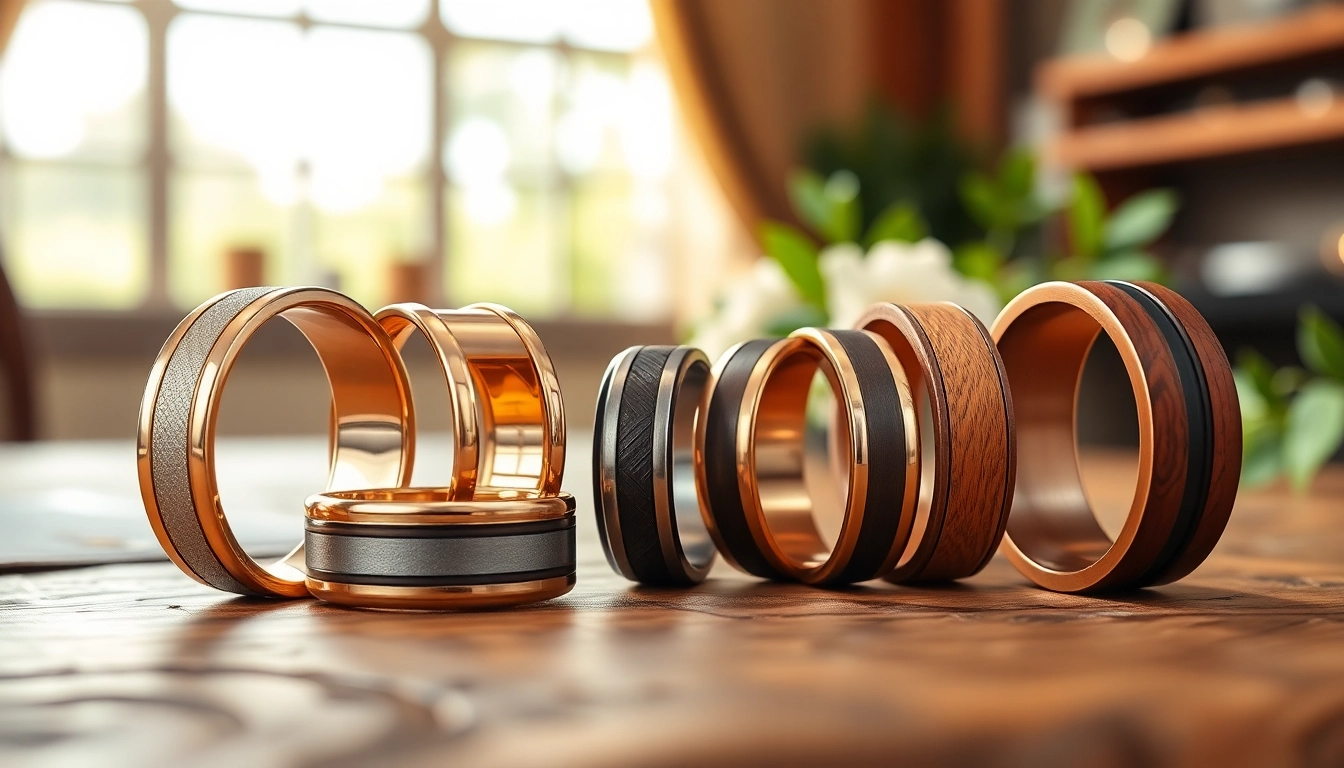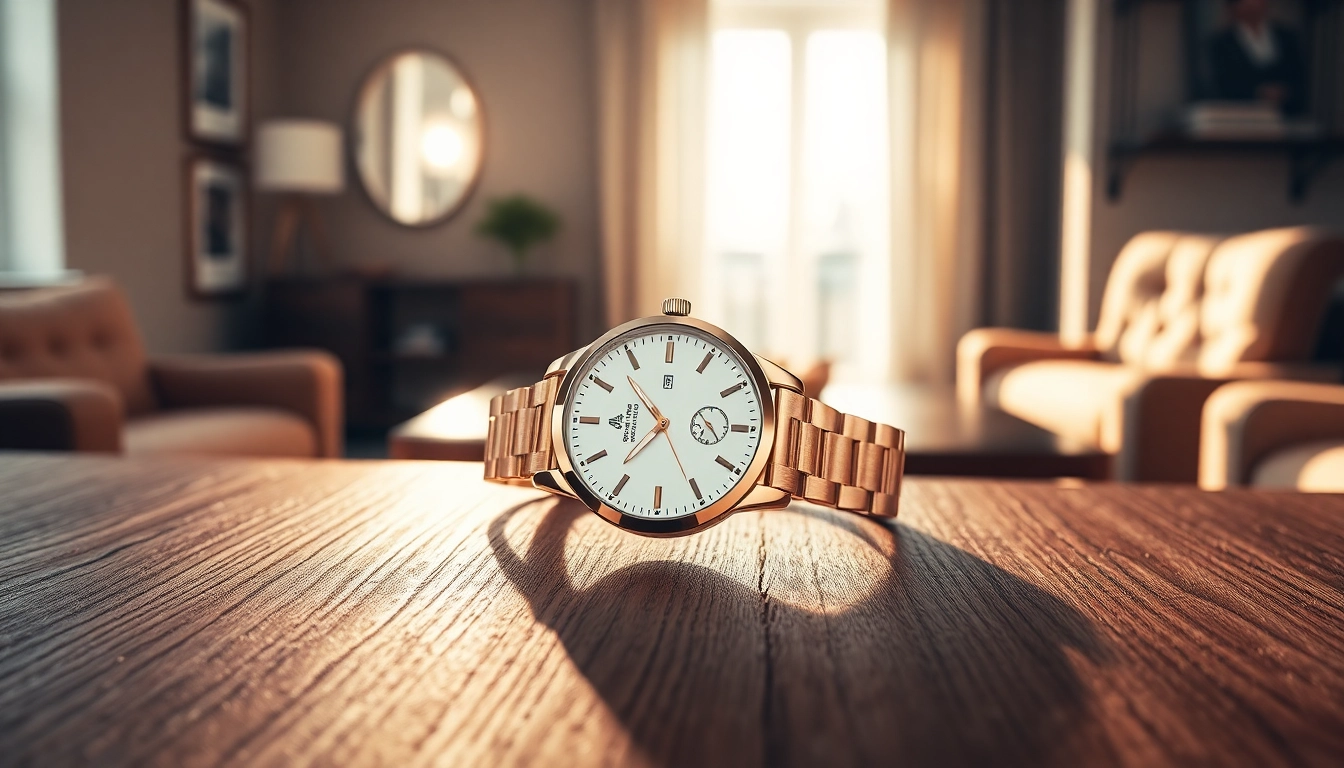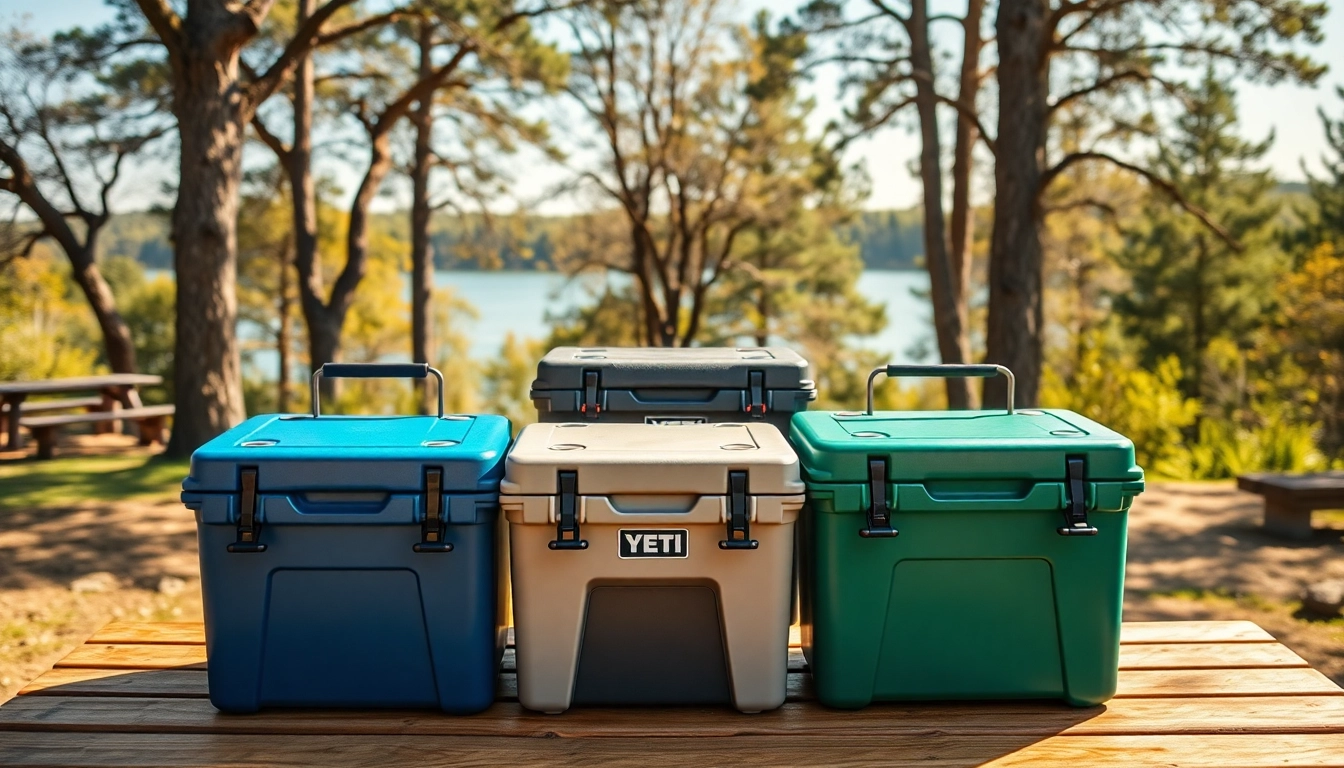Understanding Men’s Wedding Bands
What Are Men’s Wedding Bands?
Men’s wedding bands are rings traditionally worn by men to signify their marital status. Unlike women’s wedding rings, which often feature ornate designs and precious stones, men’s wedding bands typically embrace simplicity and durability. They can be crafted from various materials and come in numerous styles, allowing every man to find a wedding band that reflects his personality and taste. More than just a piece of jewelry, a wedding band symbolizes commitment, love, and partnership.
The Importance of Choosing the Right Band
Choosing the right men’s wedding band is a critical decision, as it represents one of the most significant commitments in life. A wedding band is worn daily, so comfort, style, and material durability should all be considered. The right band not only complements personal style but also fits lifestyle and job requirements. For those who work with their hands or in rigorous environments, a durable material might be essential, while those with a penchant for classic styling may look for traditional metals. Understanding what features are most important to you can help in selecting a band that you’ll cherish for years to come.
Common Materials Used in Men’s Wedding Bands
When it comes to men’s wedding bands, the material is paramount. The most common materials include:
- Gold: This classic choice comes in yellow, white, and rose options, known for its timeless appeal.
- Tungsten: Known for its strength and durability, tungsten bands are scratch-resistant and ideal for an active lifestyle.
- Platinum: The most durable of metals, platinum bands are hypoallergenic and naturally white, making them a luxurious choice.
- Silicone: Perfect for those with active lifestyles or jobs where traditional bands might be impractical, silicone bands are comfortable and flexible.
- Wood: Unique and increasingly popular, wooden bands offer a natural aesthetic and can be combined with metals for added flair.
Types of Men’s Wedding Bands
Classic Gold Men’s Wedding Bands
Gold men’s wedding bands are often chosen for their traditional and symbolic value. Gold is a malleable metal, allowing for intricate designs and styles. Whether you prefer a polished look or a brushed finish, gold bands are versatile and can complement various styles. The purest form is 24k gold, but 14k and 18k varieties are more durable due to the alloyed metals mixed in. Consider your lifestyle when choosing gold as softer bands can scratch more easily, necessitating extra care.
Contemporary Tungsten Men’s Wedding Bands
In recent years, tungsten has emerged as a popular alternative for men’s wedding bands, gaining recognition for its incredible strength and scratch resistance. Contemporary tungsten bands can feature sleek designs and come in various finishes—from high polish to matte. This modern metal often has a heavier feel, appealing to those wanting a substantial presence. Additionally, tungsten can be combined with other materials, such as wood or resin, to create unique dual-material bands.
Unique Wooden and Alternative Metal Options
For men seeking something truly distinctive, wooden wedding bands have become a trendy choice. These bands can be entirely made of wood or feature wood inlays set into metal bands. They project a natural, earthy vibe and can be customized with various types of wood, each offering different grains and colors. Alternative metals like titanium and cobalt chrome also provide modern solutions—both materials are lightweight yet durable, making them suitable for daily wear and a modern aesthetic.
Personalizing Your Men’s Wedding Band
Engravings and Custom Symbols
Personalization adds a special touch to men’s wedding bands. Options often include engravings of meaningful messages, dates, or even fingerprints. Custom symbols can reflect interests, values, or shared moments, making the band a true representation of the relationship. Engraving typically explores various fonts and styles, allowing couples to craft something unique. This level of customization not only enhances sentimental value but also transforms a standard band into a one-of-a-kind piece.
Selecting Sizes and Comfort Fit
Proper sizing is crucial for comfort and wearability. It’s recommended to have the ring sized by a professional jeweler. Consideration should also be given to comfort fit designs that feature a rounded inner surface, offering a more comfortable wear over extended periods. Those with larger knuckles may favor wider bands, as they help ensure a snug fit. If lifestyle or temperature fluctuations are a concern, discussing size adjustments becomes important; it may also be wise to consider a temporary alternative size if swelling is common.
Choosing the Right Finish and Texture
The finish and texture of a wedding band can significantly affect its appearance. Options span from high-polished to brushed or matte finishes. Textured bands might include hammered, rustic, or organic finishes which create visual interest and uniqueness. The finish often echoes individual taste preferences, so considering lifestyle and maintenance requirements is key, as different finishes may require different levels of care.
Buying Guide for Men’s Wedding Bands
Where to Shop for Men’s Wedding Bands
When it comes time to purchase a men’s wedding band, there are numerous shopping avenues to consider. Brick-and-mortar jewelry stores provide the advantage of trying on rings for size and feel. Additionally, many online retailers offer a broader selection and can often present more competitive pricing. Moreover, websites like men’s wedding bands provide an expansive inventory with customization options, allowing for at-home browsing and comfort during the selection process. Before committing to a purchase, however, examine reviews and reputations to ensure quality service and product satisfaction.
What to Consider When Comparing Options
While shopping for men’s wedding bands, several factors should be taken into account. These include the types of materials and their associated costs, band widths, styles, and available finishing options. It’s also crucial to consider warranty and return policies, particularly if adjustments may be necessary post-purchase. Comparing prices across different materials can offer insight into budget allowances while balancing desired craftsmanship and design uniqueness.
Understanding Pricing and Value
The price of men’s wedding bands significantly varies based on materials used, design intricacies, and market demand. Gold and platinum tend to command higher prices due to their precious nature, while titanium and tungsten offer stronger yet often less expensive alternatives. It’s essential to assess the value based on quality over cost; investing in a well-crafted band translates to longevity and satisfaction. Paying attention to craftsmanship can ultimately help justify the financial outlay, as bands built with care will withstand the test of time.
Care and Maintenance of Men’s Wedding Bands
Cleaning and Storing Your Wedding Band
Keeping a wedding band clean ensures its lasting beauty. Most metals can be cleaned at home using mild soap and warm water paired with a soft brush to remove debris. Specialized cleaners may be preferred for more delicate materials. For storing, it’s advisable to place the band in a soft cloth or separate compartment away from other jewelry to prevent scratching or damage while not in use. Furthermore, being aware of where the band is worn—particular environments can lead to accelerated wear and tear—can help inform maintenance routines.
Protecting Against Damage During Daily Use
Daily wear can expose men’s wedding bands to various damages such as scratches, dents, or tarnish, especially in active lifestyles. To mitigate wear, it’s recommended to remove the band during activities such as heavy lifting, sports, or exposure to chemicals. Some materials may be more prone to scratches, suggesting that proper care and precaution are necessary for maintaining the visual appeal of the band. Regular checks for signs of damage can help prevent further issues down the line.
When to Re-polish or Resizing
Over time, a wedding band may require re-polishing to restore its original luster, especially for polished metals. It’s also essential to resize the band if necessary, particularly if there are significant fluctuations in size due to weight changes or temperature fluctuations. Visiting a jeweler can help assess the need for such updates and facilitate timely adjustments, ensuring that the band continues to be a comfortable and cherished item.



